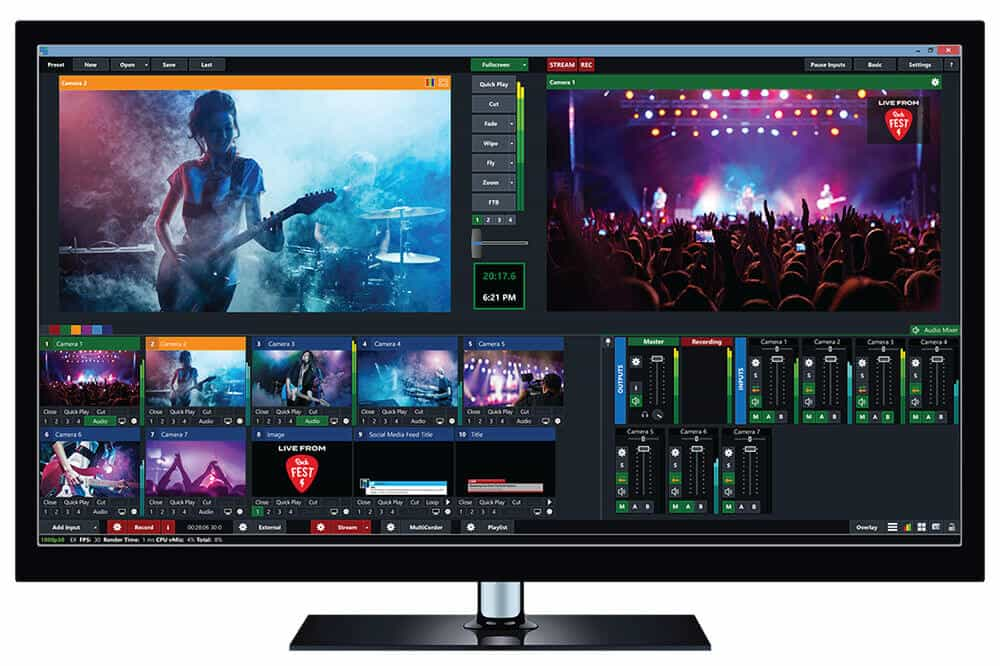MARKET OVERVIEW
Global Digital Manufacturing market is estimated to reach $1,490.1 Million by 2031; growing at a CAGR of 16.7% from 2024 to 2031.
Global Digital Manufacturing is revolutionizing the manufacturing industry by leveraging cutting-edge technologies to enhance efficiency, flexibility, and innovation. Through the use of advanced digital tools and systems, digital manufacturing is reshaping traditional manufacturing methods worldwide. By combining technologies such as artificial intelligence, IoT, and big data analytics, companies can create a connected production environment that enables real-time monitoring, optimization, and risk mitigation. The use of digital twins allows for virtual testing and experimentation, leading to faster product development cycles and accelerated time-to-market.
Moreover, the integration of digital tools in supply chain management has improved visibility, transparency, and efficiency in manufacturing processes. Digital manufacturing enables manufacturers to optimize demand forecasting, inventory management, and logistics planning, resulting in reduced costs, waste, and improved supply chain performance. Blockchain technology ensures traceability and authenticity of products within the supply chain, addressing consumer demands for sustainable and eco-friendly products. The transformation of the workforce is also crucial in the adoption of digital technologies, requiring upskilling and training to maximize the benefits of digital manufacturing and maintain competitiveness in the marketplace. As the Global Digital Manufacturing market continues to evolve, it will play a pivotal role in driving innovation, sustainability, and economic growth in the manufacturing industry, redefining practices and shaping the future of manufacturing worldwide.

GROWTH FACTORS
The rise of digital manufacturing has ushered in a new era of efficiency and innovation in the industrial sector. Globalization and technological advancements are driving the growth of the digital manufacturing market to unprecedented levels, revolutionizing the way manufacturing operations are conducted. Industry 4.0 and IoT technologies are at the forefront of this transformation, enabling connectivity, data exchange, and real-time monitoring that optimize processes, enhance productivity, and ensure operational excellence.
The demand for high-performance, cost-effective production processes has fueled the adoption of digital manufacturing solutions. In a fiercely competitive global marketplace, businesses are turning to waste reduction, minimized downtime, and improved output quality to stay competitive. Digital manufacturing techniques like virtual simulations, predictive maintenance, and automated quality control have become essential tools for forward-thinking enterprises looking to achieve these goals. While challenges such as installation costs and cybersecurity concerns may pose obstacles to adoption, the future of digital manufacturing looks promising as technologies like AI and ML continue to evolve and drive efficiency, quality, and profitability in manufacturing processes.
MARKET SEGMENTATION
By Component
The world of manufacturing is on the brink of a digital transformation with promising prospects for the future. The Global Digital Manufacturing Market is poised for significant growth as it integrates cutting-edge technology into traditional manufacturing processes. Advanced hardware such as sensors, robotics, additive manufacturing machines, and industrial computers will drive digitization in manufacturing, but the true backbone of these intelligent systems lies in software. Advanced algorithms, machine learning models, and simulations will play a crucial role in decision-making, allowing manufacturers to respond quickly to market demands. The concept of virtual twins for products and processes will revolutionize the industry by optimizing simulations to eliminate waste and maximize productivity on the factory floor. The real power of digital manufacturing, however, lies in its ability to integrate various services. Data analysts, cybersecurity experts, and cloud computing engineers will collaborate with manufacturers to extract valuable insights and safeguard sensitive information. As we embark on this new digital journey, innovation will pave the way for a future where digital manufacturing leads the charge towards excellence. The convergence of hardware, software, and services will create a world where manufacturing becomes more of an art form, blending efficiency with sustainability, and blurring the boundaries between what is possible and impossible.
By Technology
Digital manufacturing is revolutionizing the way goods are produced, ushering in an era of efficiency, customization, and innovation. With advancements in technologies such as robotics, 3D printing, and the Internet of Things (IoT), the manufacturing process is undergoing significant growth and transformation. Robotics plays a crucial role in digital manufacturing by enhancing production lines with highly sophisticated movement and increased accuracy, leading to higher output and quality. 3D printing, once considered niche, is now reshaping manufacturing by enabling the creation of complex designs and customized products. The IoT facilitates connectivity and data exchange among machines, allowing for real-time information analysis and informed decision-making. Augmented and virtual realities are also poised to play a pivotal role in the future of digital manufacturing by offering realistic virtual simulations for training and collaboration purposes. As the global digital manufacturing market evolves, producers utilizing these technologies will gain a competitive edge through faster production, lower costs, and flexibility in meeting market demands. The convergence of robotics, 3D printing, IoT, and other innovative technologies will redefine the manufacturing landscape, fostering creativity and innovation in the industry.

By Application
Digital manufacturing represents a significant leap forward in production processes, utilizing advanced concepts and methods to enhance the creation of goods compared to previous generations of manufacturing. By integrating virtual simulation, data analytics, and sophisticated automation, this innovative approach optimizes manufacturing processes to a high degree. The future of digital manufacturing is poised to transform factories into highly intelligent, interconnected ecosystems where every aspect of production, from design and prototyping to quality control and logistics, is guided by advanced algorithms. AI and machine learning will play a crucial role in predictive maintenance, real-time optimization, and rapid responses to market fluctuations.
In the automotive and transportation sectors, digital manufacturing will revolutionize the production of customized vehicles through flexible production lines and additive manufacturing techniques like 3D printing. The aerospace and defense industries will benefit from digital manufacturing by utilizing lightweight, high-performance materials and advanced simulation technologies to streamline development cycles and ensure safety standards are met. Consumer electronics will also see improvements in agility and responsiveness, allowing for faster product cycles and the incorporation of consumer feedback into product design. Additionally, industrial machines will undergo significant changes, working collaboratively with humans to increase productivity, safety, and quality control through intelligent automation and predictive maintenance algorithms. As we move forward, digital manufacturing will continue to evolve, fueled by technological advancements and a commitment to optimization, ultimately blurring the lines between physical and digital worlds to create a more creative, efficient, and sustainable future.
By Process Type
Digital manufacturing is revolutionizing the way products are designed, simulated, and realized, with a significant impact cutting across different age groups and geographic regions. This phenomenon is driven by an amalgamated complex of state-of-the-art technologies that are redefining the manufacturing landscape. At the core of Digital Manufacturing are computer-aided processes that span every phase of a product's lifecycle. Computer-Based Designing allows for the conceptualization and refinement of product designs with unparalleled precision and creativity, enabling designers to iterate and refine designs to achieve their vision.
Computer-Based Simulation provides a virtual platform for manufacturers to test product performance, identify potential issues, and make necessary adjustments before physically prototyping the product. This reduces risks, controls costs, and accelerates time-to-market by simulating real-world conditions. Additionally, Computer 3D Visualization brings digital designs to life with realistic renderings, fostering stakeholder collaboration and enabling teams to enhance designs from multiple perspectives before production. Analytics plays a crucial role in Digital Manufacturing by enabling informed decision-making through data analysis, helping manufacturers optimize production efficiency, quality control, and adapt to emerging trends. As the industry evolves, the future holds even greater integration of digital technologies, promising significant changes in how products are conceived, produced, and delivered to consumers.
REGIONAL ANALYSIS
The digital manufacturing revolution is reshaping the industrial landscape on a global scale, with cutting-edge technologies driving significant changes. Regional dynamics play a crucial role in shaping the trajectory of this transformative shift. In North America, a tech-savvy workforce and robust infrastructure have propelled the adoption of innovative digital manufacturing solutions, leading to enhanced operational efficiency and cost savings. Meanwhile, Europe, with its strong industrial heritage, is investing heavily in Industry 4.0 initiatives, particularly in key sectors like automotive and aerospace. Asian powerhouses like China, Japan, and South Korea are leveraging digital technologies to optimize production processes and cater to evolving consumer demands. South America, though not yet in the midst of a digital revolution, is steadily embracing digital manufacturing to boost productivity and competitiveness. The Middle East and Africa are also recognizing the strategic importance of digital manufacturing, focusing on skills development, infrastructure enhancements, and public-private collaborations to drive innovation and economic growth. Moving forward, regional partnerships and knowledge sharing will be key in fostering a more interconnected and efficient manufacturing ecosystem worldwide.

KEY INDUSTRY PLAYERS
In the midst of the ongoing digital revolution, the landscape of modern manufacturing is undergoing a remarkable transformation, with a select group of forward-thinking players spearheading innovation in the Global Digital Manufacturing market. Companies embracing cutting-edge technologies are revolutionizing the design, production, and delivery of their products, paving the way for a future where the boundaries between the physical and virtual realms seamlessly converge. Leading the charge are industry giants like Siemens AG, TATA Consultancy Services Limited, Dassault Systèmes, Autodesk Inc., SAP SE, and PTC Inc., who are driving change through the development of software solutions, cloud computing, and advanced data analytics. Envision a world where intelligent machines collaborate with human operators to optimize production cycles, where designers refine virtual models before physical production, and where supply chains seamlessly adjust to market demands in real-time. This future is not a distant dream, but a rapidly evolving reality, with innovators like Cogiscan, Mitsubishi Electric Automation, Inc., Fujitsu Limited, and Metal Worm leveraging cutting-edge technologies to redefine the possibilities of manufacturing. As companies embrace advanced robotics, automation, 3D printing, and augmented reality, they are not only transforming their technological capabilities but also fostering a cultural shift towards collaboration, agility, and continuous improvement. These visionary companies are poised to capitalize on unprecedented opportunities, delivering products with unparalleled speed, precision, and quality to meet the demands of the new era of manufacturing.
REPORT SCOPE AND SEGMENTATION
|
Attributes |
Details |
|
Market Size By 2031 |
USD 1,490.1 Million |
|
Growth Rate |
CAGR of 16.7% |
|
Forecast period |
2024 - 2031 |
|
Report Pages |
250+ |
|
By Component |
|
|
By Technology |
|
|
By Application |
|
|
By Process Type |
|
|
By Region |
|
|
Key Market Players |
|



_page-000162.jpg)
_page-000168.jpg)
_page-000167.jpg)
_page-000166.jpg)
_page-000165.jpg)






 APAC:+91 7666513636
APAC:+91 7666513636





